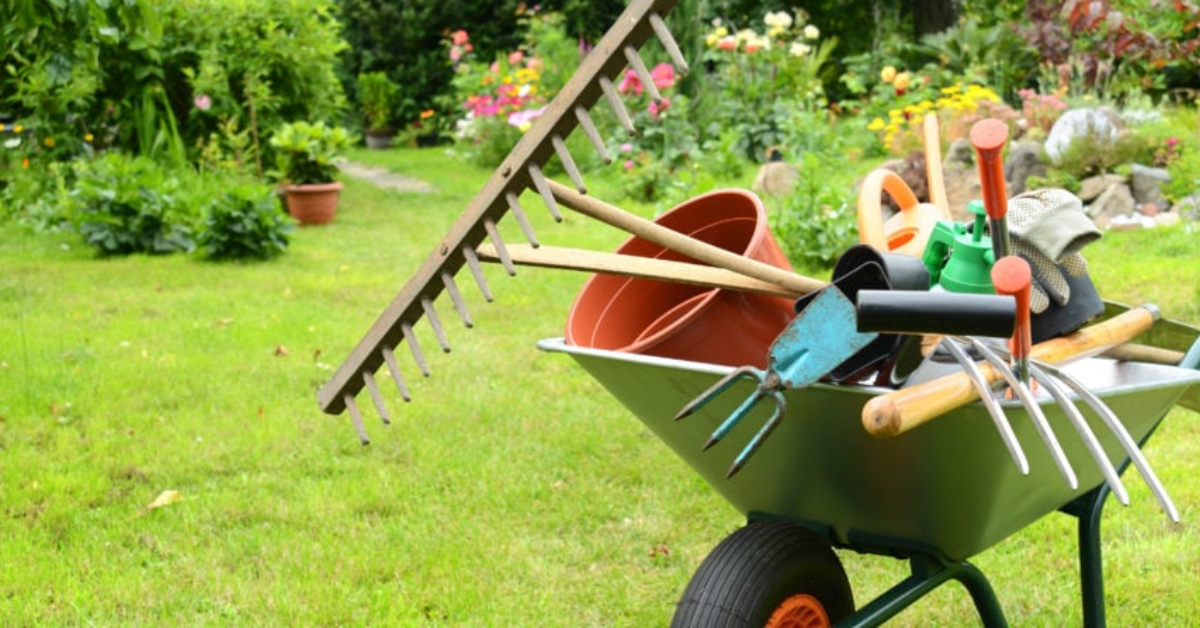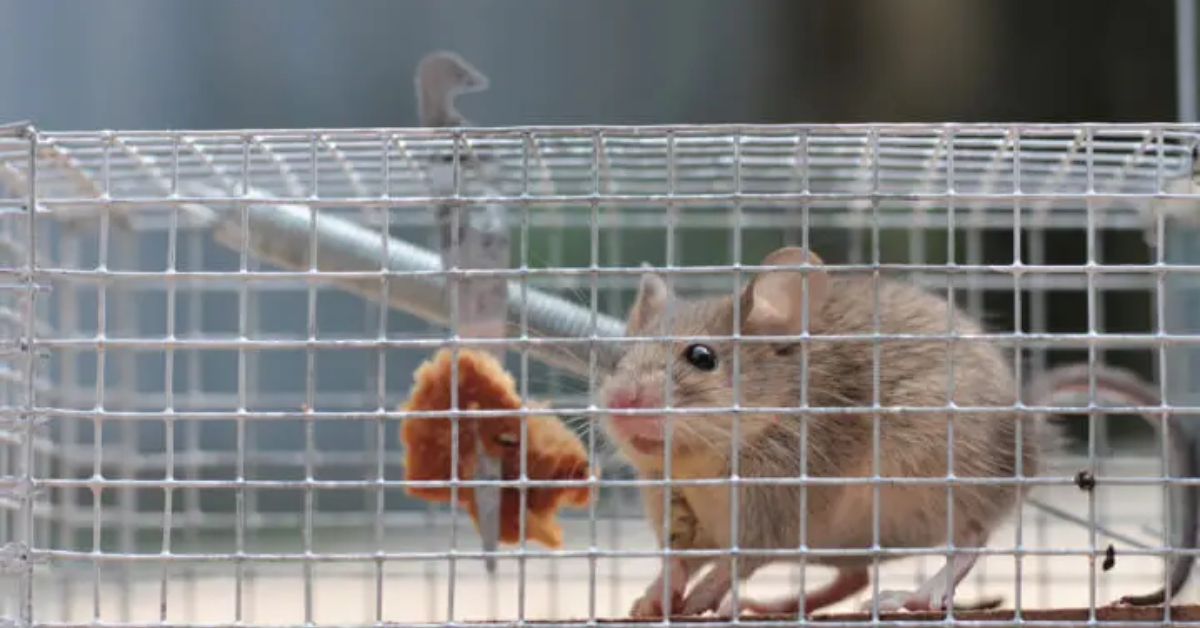Avoid These 10 Fall Pests: How to Keep Your Home Pest-Free
As the crisp air of fall settles in, the last thing you want to deal with is pests invading your home. But every year, as temperatures drop, these uninvited guests start looking for warmth—and your home is the perfect place to settle in for the season.
I know it can feel like a losing battle sometimes, especially when it seems like new pests show up every fall. Whether it’s mice sneaking in through tiny gaps or spiders spinning webs in the corners, these pests aren’t just an inconvenience—they can be a health risk and a hassle to get rid of. But here’s the thing: keeping pests out doesn’t have to be complicated. With the right steps, you can prevent them from ever making their way inside in the first place.
Let’s dive into 10 simple yet effective tips that can make your home pest-free this fall. It’s not about fancy treatments or expensive services—it’s about practical, everyday actions that anyone can take to create a barrier between your home and the pests that want to come inside. Ready to protect your space? Let’s get started.
1. Seal All Entry Points Before Winter Hits
As the cold weather creeps in, pests are on the lookout for warm places to hide. One of the easiest and most effective ways to keep them out is by sealing any gaps or cracks around your home. This simple first step is crucial because even the tiniest openings can be an invitation for pests to sneak in.
You might be surprised at how many entry points are lurking right under your nose. These include:
- Gaps around doors and windows
- Cracks in walls or foundations
- Holes in screens or vents
- Gaps around pipes and cables
By taking a few minutes to inspect your home and seal these areas, you can significantly reduce the chances of pests getting in. For a deeper look at how pests typically enter your home, make sure to check out The 5 Most Common Pest Entry Points and How to Block Them. Use weather stripping, caulk, or expanding foam for the job, depending on the size of the gap. It’s a quick fix that can make a big difference.
Why It’s Important: Sealing up these entry points is often the first thing recommended by pest control experts. When your home is sealed tight, it becomes much harder for pests to get in, keeping them out of your living space and away from your family.
Tip: While sealing your home, don’t forget to check your attic and basement. These areas are often forgotten but can be prime entry points for rodents and insects. If you’re unsure where to start, consider reading more about how small holes can turn into big problems on trusted sources like PestWorld.
2. Keep Your Yard Clean and Tidy to Reduce Shelter Areas for Pests

It’s not just the inside of your home that needs attention when it comes to pest prevention—your yard plays a crucial role too. Pests, especially rodents, spiders, and insects, love cluttered areas where they can hide, nest, and breed. That’s why keeping your yard clean and tidy can be one of the most important steps you take to keep pests at bay.
Here’s what you can do:
- Trim bushes and trees: Overgrown vegetation can create hiding spots for pests, so keep plants trimmed back from the sides of your home.
- Remove fallen leaves and debris: Leaves, twigs, and grass clippings attract pests like rodents and insects. Make sure to rake up fallen leaves regularly.
- Store firewood away: If you’re stacking firewood for the winter, keep it at least 20 feet away from your home to prevent pests like termites and rodents from setting up shop.
By simply keeping your yard free of debris, you’ll remove places where pests could seek shelter, making it harder for them to find their way inside.
A clean yard not only makes your home look better, but it’s also a first line of defense against pests. Think of it as setting up a barrier around your home that makes it less appealing to invaders. Plus, if you get rid of these hiding spots, pests won’t have a place to set up camp right outside your door.
3. Remove Sources of Standing Water to Prevent Pests from Breeding
Standing water is like an open invitation for pests. It gives them a place to breed and thrive, especially in the fall when they’re actively looking for shelter before winter hits. Whether it’s a puddle after a rainstorm or a neglected plant saucer, any standing water can become a breeding ground for mosquitoes, rodents, and other pests.
Here’s how you can tackle it:
- Empty water from plant trays: If you have potted plants, make sure there’s no water collecting in the trays beneath them.
- Check for clogged gutters: Leaves and debris in gutters can trap water and create pools where pests can breed. Clean them out regularly to keep water from building up.
- Fix leaky faucets or pipes: Dripping faucets or pipes create ideal environments for pests to gather. Repair any leaks to eliminate these sources of water. If you’re dealing with fleas, another important step is to explore our tips in 10 Easy Ways to Get Rid of Fleas in Your Home Without Expensive Sprays, which can also help with pest control in moist environments.
By addressing these issues, you’ll reduce the chances of pests breeding right outside your door, keeping them from invading your space.
Preventing standing water helps to eliminate a major factor that attracts pests—breeding grounds. When you remove this water source, you’re taking away their ability to multiply, making it that much harder for them to invade your home. Plus, it’s simple to do, and it’s a proactive step you can take today.
4. Apply Natural Repellents to Deter Fall Pests
When it comes to pest control, you don’t have to rely on harsh chemicals. Natural repellents are not only eco-friendly but can be just as effective in keeping pests at bay. Essential oils like peppermint, eucalyptus, and citronella are known to repel common fall pests such as spiders, rodents, and even mosquitoes. Diatomaceous earth is another natural solution that works wonders against insects by causing them to dry out and die, without any harmful effects on your health or the environment.
Here are some natural repellents you can use:
- Peppermint oil: Mix with water and spray around windows and entry points to deter spiders and ants.
- Cedarwood chips: Place these around your home’s perimeter to repel moths and other insects.
- Diatomaceous earth: Sprinkle in areas where pests are likely to enter or breed.
These natural solutions offer a simple and safe way to fight back against fall pests, particularly for those who prefer to avoid chemical treatments. Plus, you’ll have peace of mind knowing you’re using non-toxic options that won’t harm your family or pets.
5. Store Firewood and Other Materials Away from Your Home’s Exterior

For many of us, fall means cozy nights by the fire. But did you know that firewood can be a magnet for pests if it’s stored too close to your home? Rodents, termites, and insects like ants and beetles love to make their homes in firewood piles. When you store firewood next to your house, you’re essentially inviting pests to come right in.
Here’s how to do it:
- Store firewood at least 20 feet from your house: Keeping it far away will reduce the chances of pests making their way indoors.
- Elevate the wood: Place your firewood on a raised platform or pallets to keep it off the ground, preventing moisture build-up and attracting pests.
- Keep the wood dry: Wet wood attracts termites and other pests. If the wood is dry, it won’t be as appealing to unwanted guests.
By following these simple tips, you can still enjoy your bonfires without worrying about pests taking up residence in your firewood pile.
6. Trim Trees and Bushes to Prevent Pests from Entering Through Vents
While many people focus on sealing entry points along the foundation of their home, they often forget that trees and bushes can also provide a path for pests to sneak in. Overgrown branches can reach your vents, windows, and even the roof, giving rodents and insects easy access to your home. A simple trim can prevent this from happening.
Here’s how to prevent pests from using your plants as a highway:
- Trim tree branches and bushes: Keep branches at least 2 feet away from your home to prevent pests from using them as a bridge to your roof and vents.
- Inspect vents: Ensure that vents, especially in the attic, are covered with fine mesh screens to keep out insects and rodents.
- Remove dead wood: Dead or rotting wood is a prime habitat for termites, so make sure to dispose of it properly.
By trimming back your trees and bushes, you’re creating a clean boundary between your home and the outside world, which can significantly reduce the likelihood of pests finding their way inside.
This tip addresses an often overlooked area—home maintenance. It encourages readers to be proactive about their landscaping to prevent pests from gaining access to their home, which can be a hidden but effective point of entry.
7. Check and Repair Screens and Weather Stripping
We often take our screens and weather stripping for granted, but these small elements can have a huge impact on keeping pests out of your home. If your window screens are torn or weather stripping is cracked, pests can easily find their way inside. Regularly checking and repairing these areas is a simple yet effective step in your fall pest-proofing routine.
Here’s what you need to do:
- Inspect window and door screens: Look for any holes or tears, and replace damaged screens to prevent insects from sneaking in.
- Check weather stripping: If the weather stripping around your doors and windows is cracked or missing, replace it to prevent drafts and keep pests out.
- Seal any gaps: Use caulk or expanding foam to fill any gaps around doors, windows, or vents that could allow pests to enter.
Taking the time to inspect and repair these areas can save you from a full-blown pest infestation. It’s a quick fix that goes a long way in preventing fall pests from entering your home.
Many homeowners overlook their screens and weather stripping, but this is a crucial point in keeping pests outside. It’s a quick and effective task that provides immediate results in preventing pests from entering your home.
For more insights into how to spot pests in your home this fall, check out The Spruce.
8. Use Traps for Rodent and Pest Detection

As temperatures drop, rodents and other pests are more likely to seek shelter indoors. While you’re pest-proofing your home, it’s important to monitor for any potential invaders. Traps can be a great tool for detecting pests early and preventing an infestation from escalating.
Here’s how to use traps effectively:
- Set up baited traps in key areas where you’ve seen signs of pests, like near food storage or along baseboards.
- Use rodent traps like snap traps, or for a non-lethal option, try live traps that allow you to release the animal away from your home.
- Monitor traps regularly: Check your traps frequently and reset them to continue monitoring for pests.
By setting up traps, you’re taking a proactive approach to pest control. Early detection is key to managing pest problems before they get out of hand, and having traps in place gives you peace of mind, knowing you’re staying ahead of the issue.
9. Schedule a Professional Pest Inspection for Peace of Mind
While DIY tips can help, there are times when it’s better to bring in the professionals. A thorough pest inspection can give you peace of mind, especially if you’re unsure about the extent of a potential infestation or if you’re dealing with more challenging pests.
Here’s why scheduling an inspection might be worth it:
- Expert knowledge: Pest control professionals can identify signs of infestation that you might miss, including hidden nests or early stages of rodent problems.
- Preventative advice: Experts can recommend additional steps to prevent future infestations and offer guidance on pest-proofing your home more effectively.
- Targeted treatments: If an infestation is detected, professionals can apply safe and effective treatments that are often more powerful than DIY solutions.
10. Keep Indoor Spaces Dry and Clean—Especially Kitchens and Basements
Pests love moisture and food, and nowhere is this more evident than in areas like kitchens and basements. By keeping these spaces clean and dry, you can greatly reduce the likelihood of attracting pests.
Here’s how to keep your indoor spaces pest-free:
- Wipe up crumbs and spills immediately: Pests are drawn to food scraps, so a quick wipe can prevent them from moving in.
- Store food in airtight containers: Keep pantry items in sealed containers to prevent pests like ants, roaches, and rodents from getting to them.
- Fix leaks and humidity issues: Damp spaces attract pests like termites, ants, and cockroaches. Repair any leaky faucets or pipes and use a dehumidifier in damp areas like basements.
By maintaining cleanliness and dryness, you make it much harder for pests to find a reason to move in. It’s a simple but highly effective step to ensure you’re not unknowingly providing pests with the conditions they need to thrive indoors. If you’re concerned about moths in your closet as well, be sure to read our article on 7 Proven Ways to Keep Moths Out of Your Closet Forever.
Focusing on high-risk areas like kitchens and basements is a practical and often overlooked part of pest control. This tip emphasizes cleanliness and moisture control, both of which are crucial for keeping pests at bay.
For more tips on pest prevention, check out GardenTech’s article on late-season pest protection.
Conclusion (Fall Pest-Proofing: Simple Yet Effective)
Fall doesn’t have to be the season for pest invasions. With just a few simple steps, you can protect your home from unwanted visitors and enjoy a cozy, pest-free season. Remember, start by sealing entry points, keeping your yard clean, and eliminating standing water. Use natural repellents, set traps for early detection, and don’t hesitate to call in the professionals when needed. Regular maintenance inside your home, especially in kitchens and basements, will ensure pests have no reason to stick around.
It’s easier than you think, and taking action now can save you a lot of hassle later. You don’t have to do it all at once—just start small and build up over time.
What pest-proofing tips have worked for you in the past? Share your thoughts and experiences in the comments below, and don’t forget to visit Build Like New for more expert tips and advice on home improvement. Let’s make your home a safe and pest-free space this fall!
Disclaimer: The tips provided in this article are for general informational purposes only. For severe infestations or specific pest-related concerns, it’s always best to consult with a professional pest control service. Build Like New is not responsible for any damage or outcomes resulting from the implementation of these tips.


